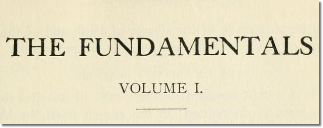Book Review - The Advent of Evangelicalism
Amazon Affiliate LinkThe Advent of Evangelicalism: Exploring Historical Continuities is a compendium of essays written in response to David Bebbington’s Evangelicalism in Modern Britain: A History from the 1730s to the 1980s (London: Unwin Hyman, 1989). A key tenet of Bebbington’s work is that the evangelical movement was a product of the Enlightenment, beginning in the 1730s with the revivals of John Wesley and George Whitefield.
 This year’s conference, originally scheduled at Heather Hills Baptist Church in Indianapolis, IN, is being re-invented as a web-based discussion only. While there was much interest in web-based conferencing, registrations for actual physical attendance at the conference were underwhelming. In the interest of not wasting the Lord’s money, we have cancelled the conference as such. All registrations will be refunded.
This year’s conference, originally scheduled at Heather Hills Baptist Church in Indianapolis, IN, is being re-invented as a web-based discussion only. While there was much interest in web-based conferencing, registrations for actual physical attendance at the conference were underwhelming. In the interest of not wasting the Lord’s money, we have cancelled the conference as such. All registrations will be refunded.


Discussion